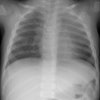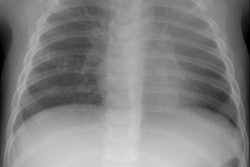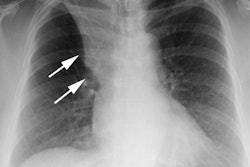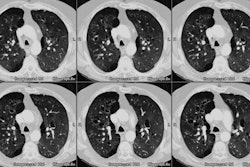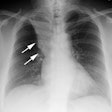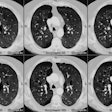Thoracic Air Leak Syndrome
- Clinical:
Thoracic air leak syndrome (TALS) is a late-onset pulmonary
complication of allogeneic hematopoietic stem cell transplantation
(HSCT) with an incidence of 0.83-2.1% [1]. The median time from
transplantation to the diagnosis of TALS is approximately 1 year,
but may develop as early as 2 months following transplantation
[1].
The condition refers to the spontaneous leakage of air from
normal air-containing structures in a lung that is affected by
other complications of HSCT [1]. The first spaces in which the
leaked air usually accumulates are the places that are immediately
close to the alveoli- including the pulmonary interstitial tissue,
mediatinum, and pleural space [1]. From there, the air may
propogate further to more distant structures, such as the
pericardium, spinal canal, muscles, and subcutaneous tissues [1].
Any spontaneous pulmonary interstitial emphysema,
pneumomediastinum, pneumothorax, pneumopericardium,
pneumorrhachis, soft tissue, and subcutaneous air in an allogeneic
HSCT patient is considered to be TALS, after other etiologies have
been excluded [1].
TALS is commonly associated with bronchiolitis obliterans (BO)
[1]. It is postulated that narrowing of the small airways in the
process of BO, impedes the backflow of air from alveoli to upper
airways during expiration [1]. This results in air being trapped
in the alveoli and intra-alveolar pressure rises [1]. The alveolar
wall is disrupted and gas extrudes from the alveoli into the
adjacent tissues [1].
- X-ray:
In addition to areas of air leak, findings of BO are present in the lungs including expiratory air trapping, bronchiectasis, bronchial wall thickening, and centrilobular nodules [1].REFERENCES:
(1) Radiology 2020; Khoshbin AP, Aliannejad R. Case 281: Thoracic air leak syndrome in a patient with hematopoietic stem cell transplantation and graft-versus-host disease. 296: 710-712
